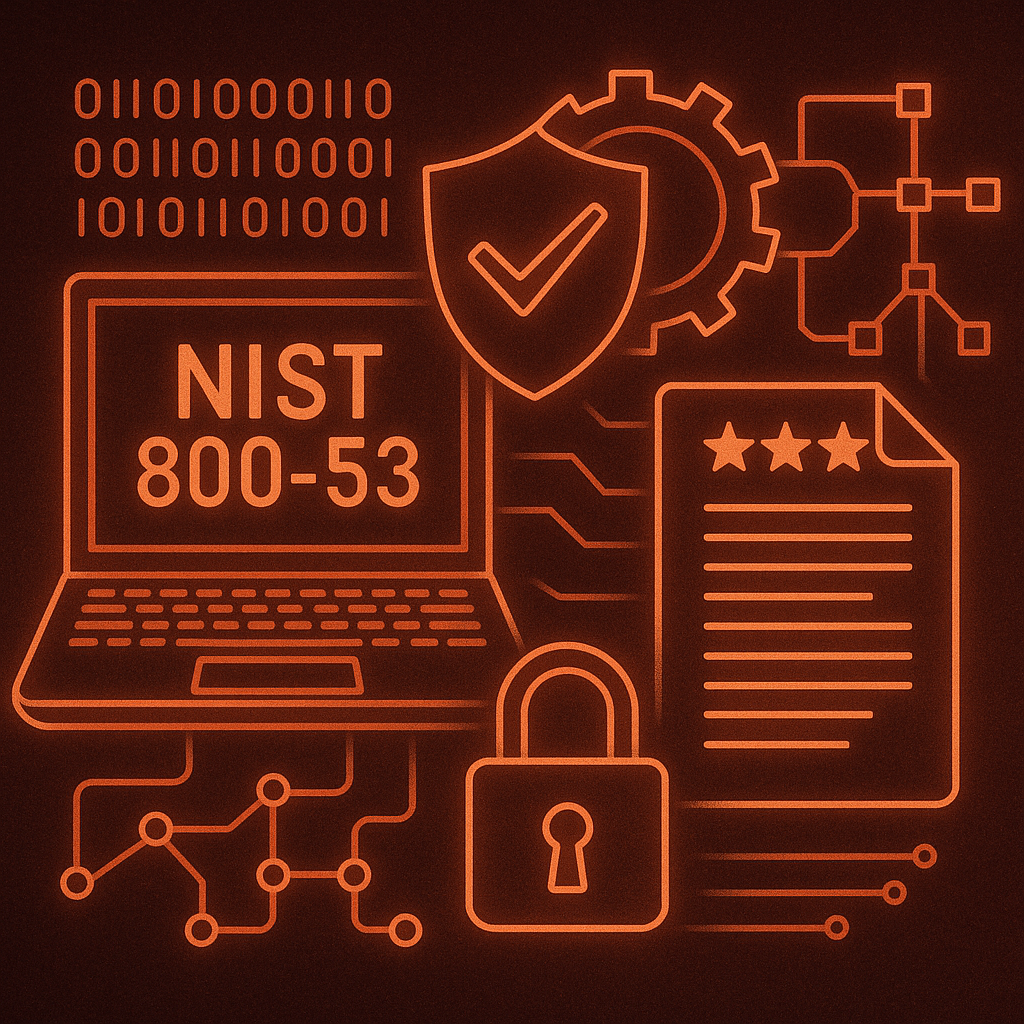Let’s get one thing straight: NIST 800-53 isn’t just a checklist—it’s the backbone of modern cybersecurity frameworks for federal agencies and any enterprise that wants airtight governance and risk mitigation. In a world of ever-evolving threats and compliance demands, NIST 800-53 provides the structured, layered defense model that serious organizations lean on to stay secure and audit-ready.
Whether you’re deploying VDI environments, managing secure file transfers with MFT, or building out Zero Trust with Agent-Based Microsegmentation, chances are NIST 800-53 is already shaping your strategy—even if you don’t know it yet.
What Is NIST 800-53?
NIST Special Publication 800-53 defines a comprehensive catalog of security and privacy controls designed to protect information systems and organizations. Originally crafted for U.S. federal agencies, it’s now widely used across industries—including healthcare, finance, and critical infrastructure.
NIST 800-53 is structured into control families like access control, audit and accountability, incident response, system and communications protection, and more. It aligns with the risk management framework (RMF) and provides flexible controls adaptable to cloud, hybrid, and on-prem architectures.
Core Pillars of NIST 800-53
Here’s what NIST 800-53 brings to the table:
- Security Control Families: 20 control families, each targeting a specific domain (e.g., AC – Access Control, IR – Incident Response, SC – System & Communications Protection).
- Tailorable Controls: Controls scale based on system impact levels (low, moderate, high), so you’re not overengineering.
- Privacy & Supply Chain Integration: The latest revisions include privacy enhancements and controls for managing third-party and supply chain risk.
NIST 800-53 vs. Other NIST Frameworks: What Sets It Apart
NIST has other widely used publications—like NIST 800-171 for protecting CUI (Controlled Unclassified Information), and NIST CSF (Cybersecurity Framework) for high-level risk governance. So how does 800-53 differ?
Standard | Purpose | Primary Use Case |
NIST 800-53 | Comprehensive control set | U.S. federal systems, high-assurance enterprises |
NIST 800-171 | Focused on protecting CUI | Government contractors, DoD supply chain |
NIST CSF | Risk governance framework | Private sector, critical infrastructure |
While 800-171 borrows controls from 800-53, it’s narrower in scope. The CSF is strategic; 800-53 is operational. Think of NIST 800-53 as the engine room that makes your security framework run.
Why Modern Architectures Still Rely on NIST 800-53
In environments where SASE is replacing legacy VPNs and Layer 3 ACLs are being redefined as dynamic policies, it might seem like 800-53 is outdated. It’s not.
In fact, it’s the opposite. NIST 800-53 is flexible enough to align with Zero Trust, software-defined perimeters, and modern segmentation approaches. You’ll find controls directly supporting:
- Identity & access enforcement across VDI platforms
- End-to-end encryption and policy enforcement in MFT
- Granular segmentation like Agent-Based Microsegmentation
- Network-level restrictions via Layer 3 ACL alternatives
It doesn’t prescribe how to implement—it ensures whatever you implement is auditable, governed, and risk-aware.
The Role of Agent-Based Controls in NIST 800-53
Several control families in 800-53 map directly to Agent-Based Microsegmentation. For example:
- AC-4 (Information Flow Enforcement) – aligns with agent-enforced segmentation rules.
- SI-4 (System Monitoring) – supported by telemetry collected by endpoint agents.
- SC-7 (Boundary Protection) – maps to host-level and microsegment traffic enforcement.
Unlike traditional firewalls or ACLs, agent-based controls give context-aware enforcement that aligns with user identity, device posture, and application-level behavior.
Integrating NIST 800-53 into DevSecOps and CI/CD Pipelines
Security teams that wait for compliance audits to start worrying about NIST 800-53 are already behind. The smartest orgs are baking 800-53 controls into infrastructure as code.
Some practical tactics:
- Use Terraform modules that align with 800-53 controls (e.g., tagging, encryption enforcement)
- Build automated checks into CI/CD that validate access controls, logging, and monitoring
- Integrate secure baselines for images, especially for MFT or data-handling containers
- Version-control your control policies the same way you manage app code
The result? Compliance becomes a side effect of good security—not a last-minute scramble.
Challenges Adopting NIST 800-53—and How to Fix Them
Implementing NIST 800-53 can be intimidating. It’s a massive library of controls. Here’s what typically goes wrong—and how to fix it:
Challenge | Solution |
Controls feel abstract | Map them to real technologies like SASE, VDI, and MFT |
Too many controls, not enough relevance | Use the “low/moderate/high” tailoring to reduce scope |
Manual processes | Automate enforcement with IaC and agent-based enforcement |
Poor visibility | Use telemetry, dashboards, and monitoring aligned to controls |
KPI-Driven Compliance: Measuring the Impact of 800-53
Good compliance isn’t a binary yes/no—it’s measurable. Here are some KPIs aligned to NIST 800-53 implementation:
KPI | What It Reflects |
% of controls automated via CI/CD | DevSecOps maturity |
Mean Time to Detect (MTTD) | Effectiveness of SIEM/logging controls |
# of policy violations | Policy enforcement health |
Agent deployment coverage | Alignment with access control & boundary enforcement |
These metrics help track progress, justify investments, and survive audits without panic.
Conclusion: NIST 800-53 Is Your Security Blueprint—Not a Burden
NIST 800-53 isn’t just for federal agencies or massive compliance teams. It’s a practical, scalable framework that gives real structure to security programs—especially in modern, fast-moving, cloud-native environments.
By combining it with technologies like SASE, MFT, Agent-Based Microsegmentation, and VDI, organizations gain not just compliance—but real-world resilience. Use it as your north star to architect secure systems that adapt, scale, and defend against tomorrow’s threats.





